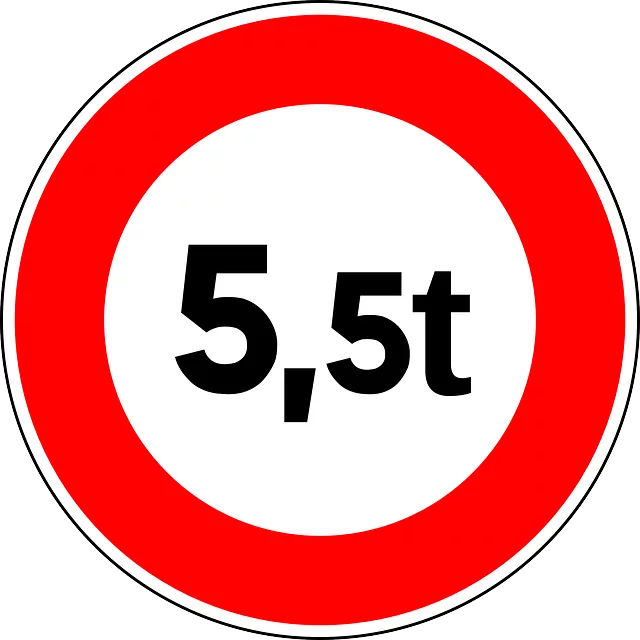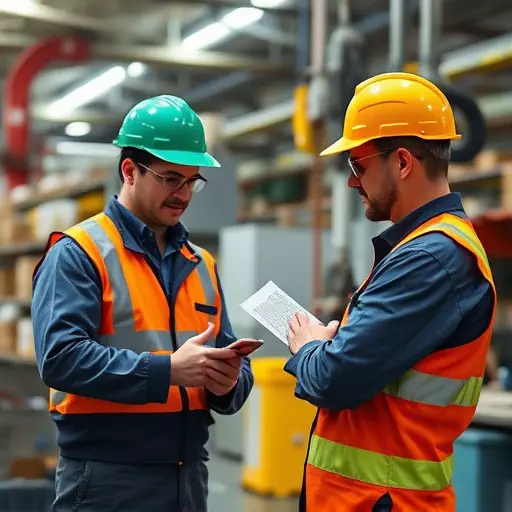Industrial hygiene consultants play a pivotal role in workplace safety by conducting comprehensive chemical exposure assessments. They analyze chemical properties, exposure routes, and worker activities, leveraging data to establish safe guidelines. These experts recommend controls like engineering solutions, PPE, and process changes to mitigate risks, ensuring compliance with occupational exposure limits (OELs) set by regulatory bodies. Through real-time monitoring and sampling techniques, they pinpoint exposure sources, track dispersion patterns, and regularly assess employee exposures, fostering a culture of industrial hygiene awareness that prioritizes worker well-being.
Chemical exposure assessment is a critical component of ensuring worker safety in modern industries. This comprehensive guide delves into the intricate world of identifying and managing chemical risks in the workplace. We explore essential topics such as understanding industrial hygiene, evaluating workplace hazards systematically, setting occupational exposure limits, and employing effective risk assessment methods.
Through this article, readers will gain insights from expert strategies on monitoring, sampling, and mitigating risks, ultimately fostering a culture of employee well-being. Industrial hygiene consultants play a pivotal role in navigating these complex issues, ensuring safe working environments.
- Understanding Chemical Exposure Assessment: A Fundamental Overview
- The Role of Industrial Hygiene Consultants in Workplace Safety
- Identifying and Evaluating Workplace Hazards: A Systematic Approach
- Occupational Exposure Limits: Setting Safe Boundaries
- Risk Assessment Methods for Chemical Substances
- Monitoring and Sampling Techniques to Measure Exposure
- Strategies for Mitigating Risks and Ensuring Employee Well-being
Understanding Chemical Exposure Assessment: A Fundamental Overview
Chemical Exposure Assessment is a critical process that evaluates and quantifies workers’ potential risks from hazardous chemicals in the workplace. It involves a comprehensive understanding of various factors, including chemical properties, exposure routes, and worker activities. Industrial hygiene consultants play a pivotal role in conducting thorough assessments, ensuring adherence to occupational exposure limits and regulatory standards.
This assessment goes beyond identifying specific substances; it involves analyzing how, when, and where workers interact with chemicals. By examining these elements, professionals can determine the extent of potential harm and implement effective control measures. A comprehensive workplace hazard evaluation is essential for maintaining a safe and healthy work environment, as it helps identify vulnerabilities and guides the development of strategies to mitigate risks associated with chemical exposure.
The Role of Industrial Hygiene Consultants in Workplace Safety
Industrial Hygiene Consultants play a pivotal role in ensuring workplace safety by conducting thorough assessments and evaluations of potential hazards, including chemical exposures. Their expertise lies in identifying, quantifying, and managing risks associated with various chemicals and substances in the work environment. These professionals employ advanced methods to measure and analyse air quality, monitor airborne contaminants, and assess worker exposure levels. By integrating scientific data and industry best practices, they establish guidelines and recommend controls to maintain safe occupational exposure limits.
Their contributions extend beyond risk assessment; industrial hygiene consultants provide valuable guidance on implementing effective control measures, such as engineering controls, personal protective equipment (PPE), and comprehensive training programs. They collaborate with employers and employees to foster a culture of safety, ensuring that workplace practices align with industry standards and regulatory requirements. This proactive approach not only protects workers’ health but also fosters a productive and sustainable work environment.
Identifying and Evaluating Workplace Hazards: A Systematic Approach
Identifying and evaluating workplace hazards is a systematic process that forms the backbone of effective industrial hygiene practices. Industrial hygiene consultants play a pivotal role in this regard, employing specialized knowledge and tools to assess potential risks in various work environments. The initial step involves conducting thorough inspections and surveys, during which they meticulously examine the workplace layout, equipment, materials, and operations. This includes identifying sources of chemical exposure, such as toxic substances, fumes, or vapours, that may exceed occupational exposure limits (OELs).
By collecting data on worker tasks, processes, and potential routes of exposure, these consultants can pinpoint areas of concern. They then utilize risk assessment methods to evaluate the likelihood and severity of adverse health effects associated with each hazard. This systematic approach ensures a comprehensive understanding of workplace hazards, enabling industrial hygiene consultants to recommend appropriate controls and interventions. Such measures may include implementing engineering controls, improving ventilation systems, providing personal protective equipment (PPE), or redesigning processes to minimize exposure and ensure compliance with OELs.
Occupational Exposure Limits: Setting Safe Boundaries
Occupational Exposure Limits play a pivotal role in safeguarding workers from potential health risks associated with hazardous chemicals. These limits, established by industrial hygiene consultants and regulatory bodies, define safe boundaries for chemical exposure in the workplace. They serve as a crucial component of a comprehensive workplace hazard evaluation process. By setting specific concentration levels or time-based restrictions, these limits ensure that employees are not exposed to toxic substances beyond what is considered safe over a given period.
Industrial hygiene consultants utilize scientific data and risk assessment methods to recommend and monitor occupational exposure limits. These experts consider factors such as the toxicity of the chemical, duration of exposure, and the physical and physiological vulnerabilities of workers. Regular monitoring and compliance with these limits are essential practices for organizations aiming to maintain a safe work environment, thereby preventing occupational illnesses and enhancing employee well-being.
Risk Assessment Methods for Chemical Substances
When conducting a chemical exposure assessment, understanding risk assessment methods is paramount. Industrial hygiene consultants employ various strategies to evaluate workplace hazards, including hazard identification, risk characterization, and exposure evaluation. This systematic approach ensures that potential risks from chemical substances are accurately determined, allowing for informed decisions to mitigate any adverse effects on workers’ health.
One key method involves establishing occupational exposure limits (OELs), which set safe thresholds for chemical concentrations in the workplace. These limits, often recommended by regulatory bodies, guide employers in implementing control measures and personal protective equipment (PPE) to safeguard employees. A comprehensive workplace hazard evaluation incorporates OELs, industrial hygiene monitoring, and risk communication to foster a safer work environment.
Monitoring and Sampling Techniques to Measure Exposure
Monitoring and Sampling Techniques play a pivotal role in Chemical Exposure Assessment, guiding industrial hygiene consultants in evaluating workplace hazards effectively. These methods involve sophisticated tools to measure and quantify airborne chemicals, ensuring compliance with established occupational exposure limits. Professionals employ real-time monitoring devices that continuously track gas or vapor levels, providing immediate insights into potential risks.
For more detailed analysis, sampling techniques are employed. This includes collecting representative air samples at various points within the work area. These samples are then analyzed in laboratories, identifying and quantifying specific chemicals present. Such data is crucial for pinpointing sources of exposure, understanding dispersion patterns, and determining whether workplace exposure levels exceed the established occupational exposure limits.
Strategies for Mitigating Risks and Ensuring Employee Well-being
Strategies for mitigating risks and ensuring employee well-being are paramount in chemical exposure assessment. Industrial hygiene consultants play a crucial role here, offering expertise in workplace hazard evaluation. They help identify potential risks associated with chemical substances, including their sources, routes of exposure, and potential health impacts. By conducting thorough assessments, these consultants can recommend appropriate control measures to reduce or eliminate hazards. This includes implementing engineering controls like ventilation systems, personal protective equipment (PPE), and work practice changes, as well as ensuring compliance with occupational exposure limits set by regulatory bodies.
Regular monitoring and surveillance are also essential components of risk mitigation. Industrial hygiene consultants can assist in establishing sampling and analysis protocols to measure employee exposures over time. This data informs the need for further control measures or adjustments to existing strategies. Additionally, providing training and education to employees about chemical hazards and safe work practices empowers them to take proactive steps for their well-being. By integrating these strategies, organizations can create a safer working environment, reduce the risk of occupational diseases, and foster a culture of industrial hygiene awareness.


